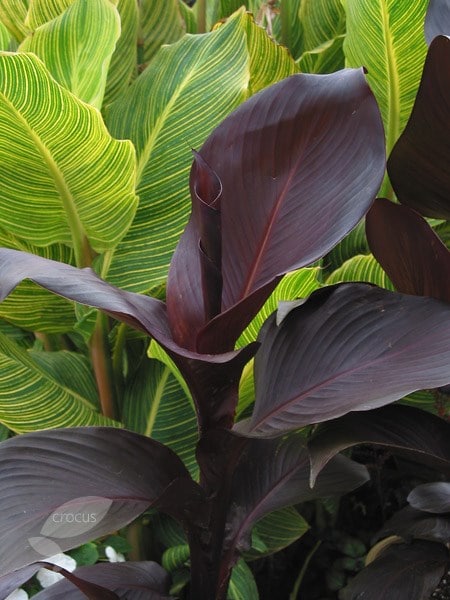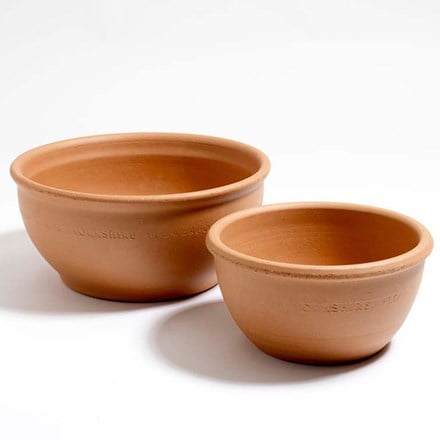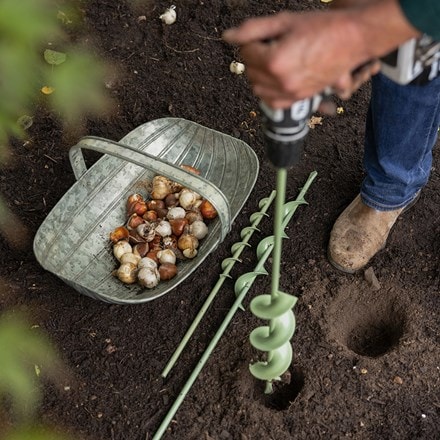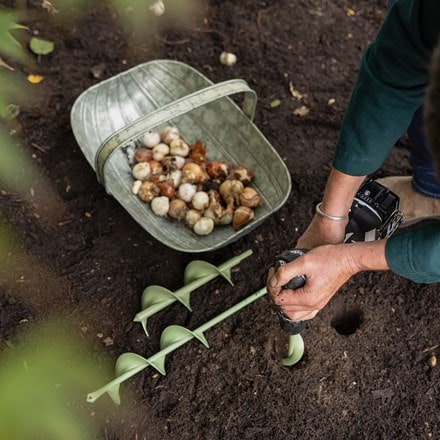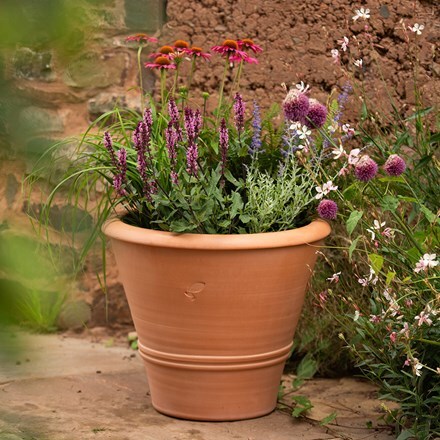Canna Tropicanna Black ('Lon01') (PBR)
Indian shot
- 1 × rhizome
- £8.99
- available to order from winter
- 3 × rhizomes
- £21.00 £7.00 each
- available to order from winter
Delivery options
- Bulbs (only) £4.99
- Position: full sun
- Soil: fertile, well-drained soil or loam-less potting compost
- Rate of growth: average to fast
- Flowering period: June to September
- Hardiness: half hardy (will need winter protection)
Broad, near-black foliage, which is suffused with traces of plum and red, is topped with heads of dazzling scarlet flowers that fade to orange as they age.
Canna Tropicanna Black makes a fine addition to summer bedding schemes, where it will create stature and drama.
Canna Tropicanna Black makes a fine addition to summer bedding schemes, where it will create stature and drama.
Pot the rhizomes up into 20cm pots filled with a good quality compost. The rhizomes should be planted shallowly, just covering them with compost, but making sure that any new shoots are above soil level.
Water lightly and then grow them on at temperatures above 15°C, increasing the water as they start to grow. Gradually harden off before planting out after all risk of frost has passed. Water regularly during the growing season, applying a phosphorus-rich liquid fertiliser each month.
In frost-prone areas lift the rhizomes in autumn and store in a frost-free environment in barely-moist compost or leaf mould.
Cannas thrive in moist, well-drained soil, so regular watering is essential, especially during dry spells. Container-grown plants may need daily watering in hot weather to prevent drying out.
Once established, apply a slow-release fertiliser in spring, followed by a high-potassium liquid feed every 2–3 weeks during the growing season to encourage strong growth and prolonged flowering.
A 5-7cm (2-3in) mulch layer of well-rotted compost will help to retain moisture, suppress weeds, and improve soil quality. Deadhead spent flowers to promote continuous blooming and remove any damaged or yellowing leaves to keep plants looking their best.
In exposed areas, tall stems may require light staking to prevent breakage. Cut plants back to 10cm (4in) in late autumn, and lift rhizomes or move pots indoors before frost to ensure overwintering success.
Water lightly and then grow them on at temperatures above 15°C, increasing the water as they start to grow. Gradually harden off before planting out after all risk of frost has passed. Water regularly during the growing season, applying a phosphorus-rich liquid fertiliser each month.
In frost-prone areas lift the rhizomes in autumn and store in a frost-free environment in barely-moist compost or leaf mould.
Cannas thrive in moist, well-drained soil, so regular watering is essential, especially during dry spells. Container-grown plants may need daily watering in hot weather to prevent drying out.
Once established, apply a slow-release fertiliser in spring, followed by a high-potassium liquid feed every 2–3 weeks during the growing season to encourage strong growth and prolonged flowering.
A 5-7cm (2-3in) mulch layer of well-rotted compost will help to retain moisture, suppress weeds, and improve soil quality. Deadhead spent flowers to promote continuous blooming and remove any damaged or yellowing leaves to keep plants looking their best.
In exposed areas, tall stems may require light staking to prevent breakage. Cut plants back to 10cm (4in) in late autumn, and lift rhizomes or move pots indoors before frost to ensure overwintering success.
- Humans/Pets: Ornamental bulbs - not to be eaten

